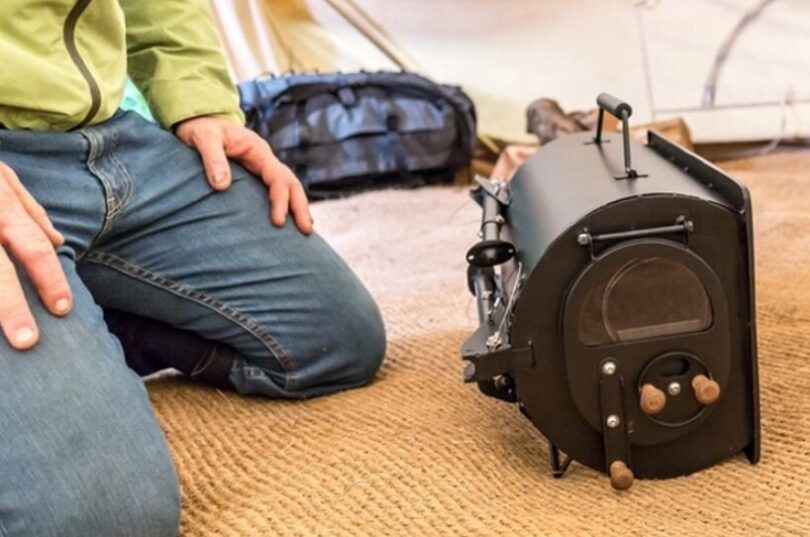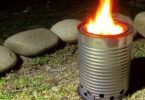There are many ways to stay warm during the cold camping nights in your tent. Having only a good and high-quality gear doesn’t seem to help always. The sleeping bag and the pads are a necessity when camping– but a well-heated tent is also an essential. That’s why it might be useful to know a thing or two about how to heat a tent!
Learning how to heat your tent isn’t a mission impossible as it might seem. Besides the natural and simple ways to heat the tent, there are also several methods that do require plus storage space in your backpack but promise a well-heated tent. The choice of the methods is personal and depends on the campers.
That’s why we created this article – to help you learn faster how to heat a tent without electricity and to gain faster this outdoor experience. We explored numerous options and created step-by-step guidelines that can reveal you these heating methods and will help you stay warm in your tent. Read on for more!
Is it the Sleeping Equipment Enough by Itself?
Spending time in the mountains and camping means having not only good hiking equipment but also good sleeping equipment for camping. A high-quality sleeping bag which can keep you warm during the harsh cold nights is a must-have but it’s not always enough.
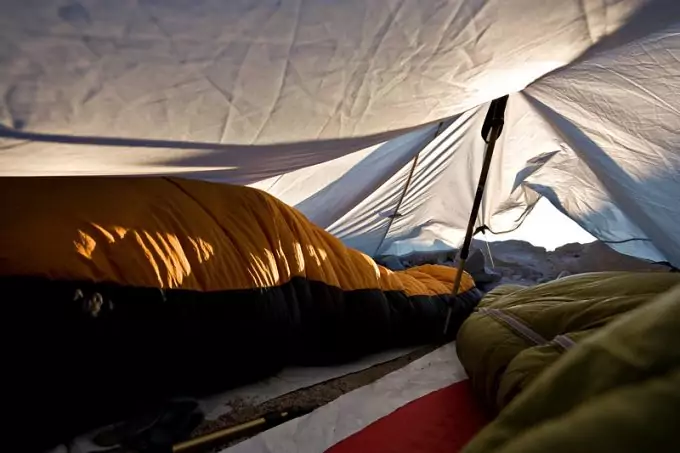
The conditions in the mountains, the winter, and the low temperatures are only one part of the puzzle called camping – and a well-heated tent is another very important part. A high-quality sleeping bag along with a good sleeping pad can provide the necessary warmth during the summer nights but this is not the case during winter.
Camping in the mountains during winter with snow and ice around the tent requires a heated tent. The high-quality expensive equipment it’s simply not enough. When you enter the tent, especially in winter it should be heated and warm inside so that you can feel safe and protected from the elements.
Why it’s Important to Heat a Tent
There are several important reasons to keep your tent warm – even during summer. The most important one is your own personal safety and body protection.
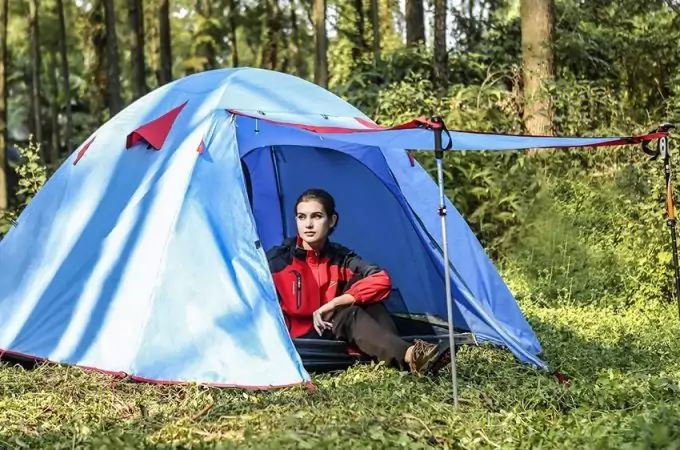
While hiking during daytime the body is warmed up and you’re constantly moving – so the risk of feeling cold or heat loss is minimal. Yet, when you’re asleep or simply sitting still the body must keep the temperature and provide the needed warmth.
Save Energy!
Keeping your body temperature while sitting or sleeping in a tent in the mountains can be an energy consuming task for your body even during summer. In order not to exhaust your body and preserve its energy for the next day, you should heat your tent. This is even much more important in winter when the heat loss can happen in few minutes.
Change of Clothes
Changing your wet clothes is another reason which may seem irrelevant but it certainly makes a difference – changing outside in the snow or in a heated tent it’s not the same, especially not for your warmed up body.
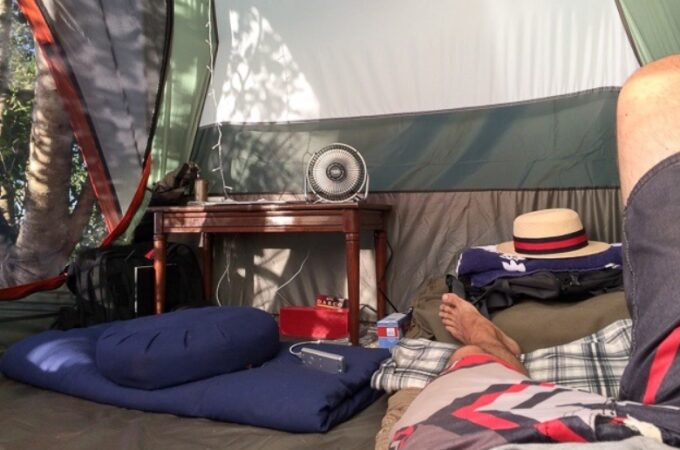
If you’re outside hiking all day you’d appreciate a warm tent where you don’t have to hurry to get rid of the wet clothes and put fast something dry on. In that case, you wouldn’t have to worry about catching a cold.
Hypothermia isn’t Fun
Although it may sound a bit exaggerated, hypothermia is another reason why to heat a tent. All outdoor lovers should be familiar with this medical emergency and its consequences – and hypothermia is a real and relevant danger during hiking or camping.
To keep your body warm and to prevent fast heat loss you should make sure that you’re sleeping in a well-heated tent and that it’ll stay warm during the night.
When to Heat a Tent
The season is not the determining factor whether to heat a tent or not – there are many other factors that should influence this decision. The season, the weather and the elements play a huge role in this decision but the personal body temperature along with the personal cold resistance are even more important. So, heating your tent in summer is also a relevant decision.
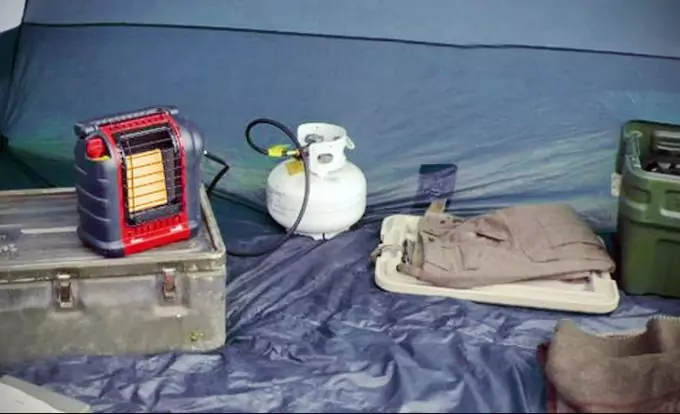
Before you consider heating the tent you should consider your personal resistance to cold temperatures and your body heat. If you’re out camping in the summer there is no need to heat a tent during the daytime – except if the temperature is under zero. But, if you’re making a winter camp and want to spend the day in the tent, it’s a good idea to heat it first.
Spending the nights, even the summer nights in a not-heated tent is not such a good idea and it’s not contributing to your body’s energy. During winter, even during the day, the body uses part of its energy to keep the body temperature normal and to prevent heat loss.
If you’re sleeping in a cold and not-heated tent the body will use much energy to prevent heat loss and to keep its normal temperature. In order to protect your body from losing heat and help save its energy for the next day hike, you should make sure that you’re staying in a warm tent which will be well-heated during the cold harsh mountain night.
Heat a tent Without Electricity
There are several methods that can help you heat a tent in the wild without electricity – and these are also simple. Yet, it takes time to learn all these methods – if you’re a newbie in outdoor sports you probably wouldn’t be familiar with the methods at the beginning.
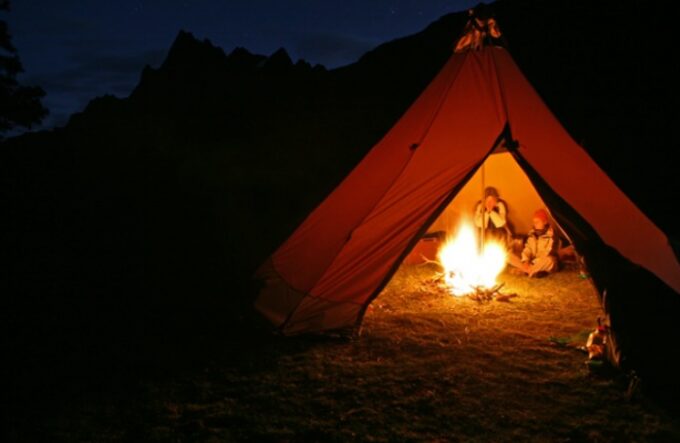
Learning how to heat a tent without electricity does not always mean that you’d have to carry additional gear or heaters – there are also few natural ways of heating your tent without carrying heavy stuff in your backpack.
However, besides the natural heaters, sometimes an additional heater must be carried in the backpack. The choice of how to heat a tent is a personal one but it depends on other factors – and here follow the heating methods.
Burned-out Campfire Place
This is, of course, a natural method which can easily help you heat a tent without having to carry heavy heaters in your backpack. It’s a very simple and very often used method – plenty of rocks can be found in the mountains and once you’re done with your campfire gathering the heated stones are turned into a useful natural tent heater.
The idea is to place the tent on the campfire once the large coals are burned and the fireplace is poured with a layer of earth. On the layer of earth, dry grass can be put before the tent is placed. Ideally, the campfire should have the same size as the tent and it should be placed in a small deepening. Before placing the tent the campfire must burn for few hours.
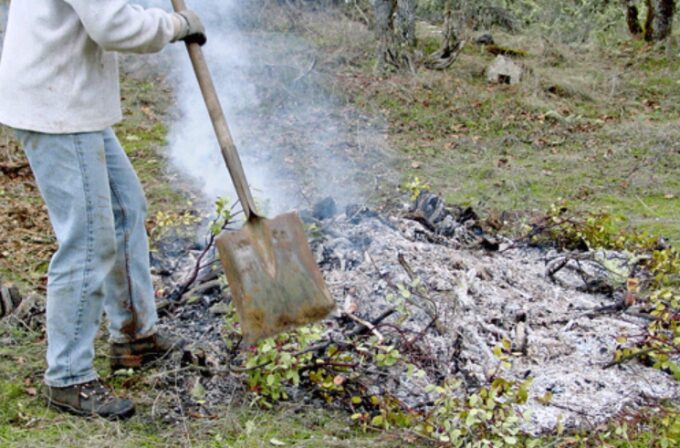
Many campers also don’t dig in the ground and also don’t put a layer of earth on the campfire. This method requires removing the embers from the fireplace and putting spruce branches on the fireplace.
With this method, the tent stays warm until the morning – but you have to check the fireplace several times and make sure all of the embers are removed. This simple natural method of heating the tent goes together with great awareness and attention before putting the tent on the fireplace.
Rock Radiators
Rock radiators or also known as warm rocks are another simple and natural way to heat a tent. The advantage of this and of the previous method lies in their simplicity – rocks and branches can be easily found in the mountains and you don’t need some special outdoor knowledge so that you can heat a rock.
The weight of the rock should be around 15 pounds so that the rock can trap enough heat and then slowly release it. When the perfect rock is found, it should be placed near the fire and left to consume the heat for few hours. After the rock is well-heated it should be removed from the fire and left to cool down.
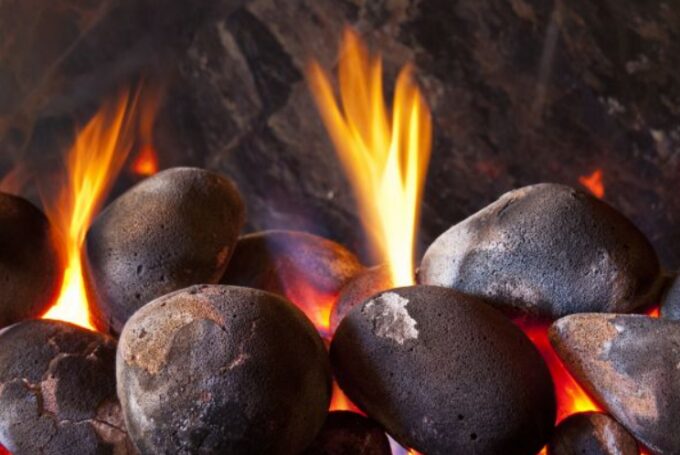
Once the rock is safe to handle, a towel is placed around it and the rock is placed inside the tent. In this way, the rock will radiate heat during the night keeping the tent well-heated until the morning.
Candle Lanterns
Candle lanterns are not a natural method to heat a tent but are lightweight and easily carried around. These lanterns are not heavy and there is always a place for them in the backpack.
Besides providing warmth, the candle lanterns also provide light in the tent and outside of it, if you need it. It may seem impossible to heat a tent with a simple candle lantern but they can increase the temperature of the tent by 10 to 15 degrees.
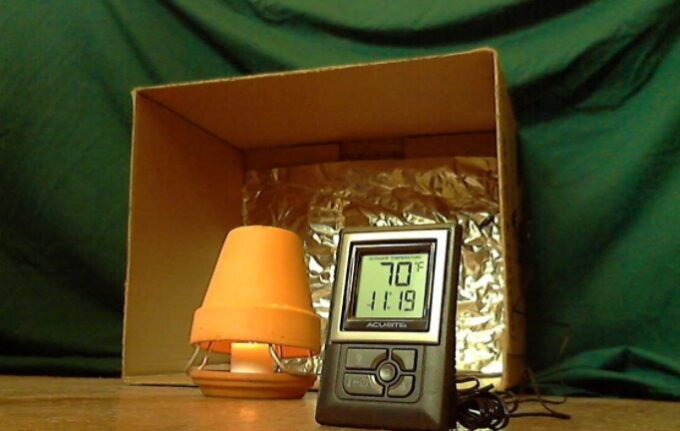
Yet, they have to be handled with care because they use an open fire. You should bear in mind that you cannot fall asleep with a lit candle lantern – leave the lantern in the tent before going to sleep so that the tent can heat up. Once you’re ready to sleep blow the candle out.
Gas Heaters
Gas heaters are not the most lightweight method to heat a tent – but they promise a warm tent during the whole night without having to worry about fire. However, the gas heaters have their disadvantages – they cannot be left on during the whole night because of the carbon monoxide which is created from the heater. Also, they’re not so easy to transport – enough place in the backpack should be provided.
On the other hand, the gas heaters are very easy to use – the things needed are a gas bottle and a gas heater. The gas heater should be left in the tent before going to sleep and this is enough to achieve as maximum heat as possible. They can provide excellent warmth in no time. Although heavy the gas heaters are very effective in heating a tent without electricity – so are worth the sacrifice.
Catalytic Heaters
The catalytic heaters are very similar to gas heaters – they are also enlisted as an unnatural method to heat a tent and also require enough space in the backpack. However, the catalytic heaters are more easily portable than the gas heaters and have the same efficiency as the gas heaters.
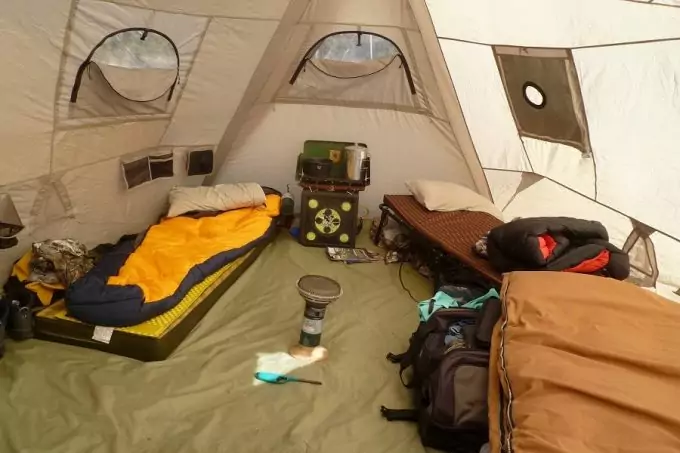
This method has also advantages and disadvantages. When you use a catalytic heater to heat a tent, you don’t have to worry about setting your tent on fire. But, these heaters also produce poison fumes rich with carbon monoxide that can kill you if you’re in an isolated environment. So, the best way to use them is to leave them on several minutes before entering the tent.
Campfire Stoves
Campfire stoves have another important usage besides cooking on them – they can perfectly heat a tent. The stoves provide enough warmth and are easy to transport. Although not many campers like to use the stoves for heating the tent, because they save the gas for cooking, the stoves can keep the tent well-heated.
Their usage is also very simple – the campfire stove is placed in the tent and it’s used for cooking inside the tent. In this way, the stove will radiate warmth in and around the tent, keeping the temperature high enough for cozy sleep. Another plus is that many stoves transport the chemical toxins from the fire – so that you don’t have to worry so much about your own safety.
Chemical Heat Packs
The chemical heat packs are easily portable and don’t require so much storage place in the backpack. They are small and lightweight – can be carried even in your backpack’s side pockets. There’re two types of heat packs: single-use and reusable heat packs. With this method, you can heat your sleeping bag and also your tent.
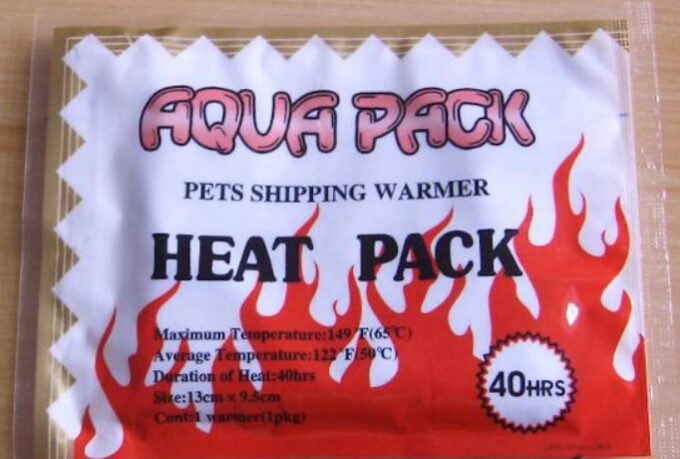
The chemical packs are placed in the sleeping bag or in the tent before going to sleep so that they can increase the temperature and offer you a warm stay. The single-use heat packs last 10 to 15 hours and must be thrown away after using them. The reusable packs can be put in boiling water for 10 minutes and reactivated.
The only disadvantage of this method is the skin irritation that these packs can cause. Therefore you should make sure that they’re not in touch with your skin, especially not in touch with children’s skin.
Carpet – Yay or Nay?
Carrying a small carpet in your backpack is certainly something no one wants to do when going on a camping trip with heavy backpacks. However, before rejecting this option you should consider your own personal resistance to the cold.
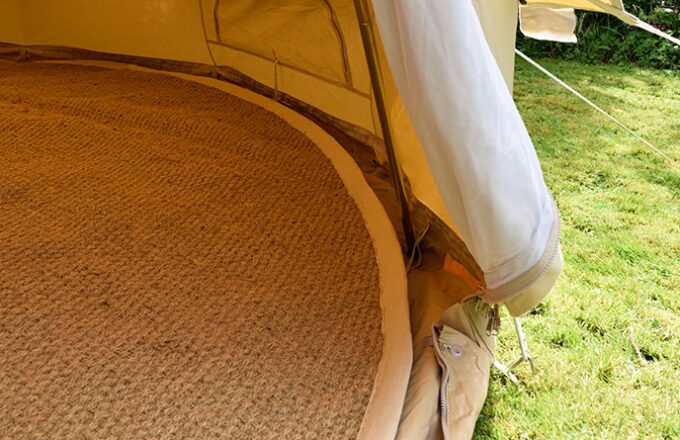
Amount of cold through the cold air comes in the tent through the floor and this cold air can be reduced with a simple carpet or rug down on the tent’s floor. The rug can be placed near the tent’s door or on the tent’s floor so that the cold air inside can be reduced.
Ready for a Cozy Night?
As you can read yourself, there are plenty ways with which you can heat up your tent. At the end of the day, it’s important to have a warm tent to spend the night in which can allow your body perfect rest and energy saving during the night.
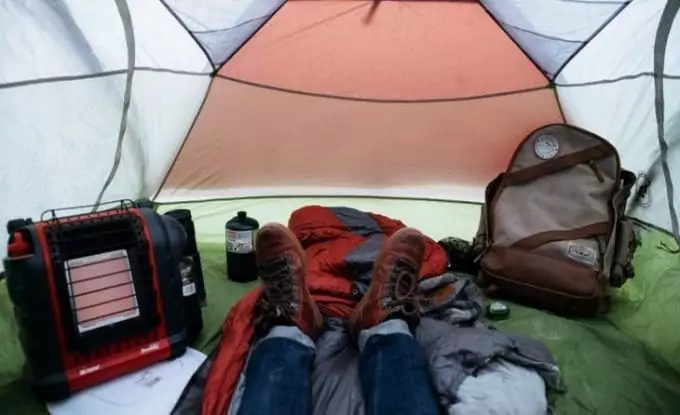
All of the methods also require great attention and care – for your own and other’s safety. No matter which one you pick, make sure you’re following all of the security recommendations so your trip goes without any bigger problems.
With this article, we provided many methods how to heat a tent without electricity together with some other useful tips that are good to know when camping or hiking in the mountains. But, if you have something to add, an idea or a comment, please let us know – we would be happy to hear back from you.

